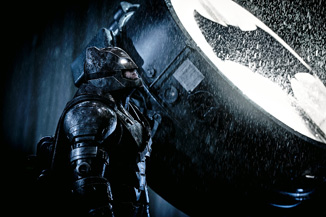Movie Review - Batman v Superman: Dawn of Justice
By Ben Gruchow
March 29, 2016
Among all of the objective strengths inherent to Christopher Nolan’s Batman movies, one of the more subconscious ones is the nature of the sound design, and specifically the score by Hans Zimmer and James Newton Howard. The Nolan pictures are intense, focused pieces of work, and the score has the effect of unobtrusively but constantly underlining every scene. Go back and watch any of the three, or all of them. There’s scarcely a moment where there isn’t non-diegetic music playing at varying levels of volume. This unending pitch of percussive music has the effect of tying each scene to the one before and after it, which helps with building tension, but it also operates - for me, at least - as a contemporary version of the Greek chorus.
With the events onscreen taking pains to be realistic, the music thrums and intones in the background with a decisively mythic feel being the result. My personal favorite instance of this took place in 2012’s The Dark Knight Rises, when Joseph Gordon-Levitt’s verbal discovery of an imminent terrorist act is all but drowned out by the overpowering impact of the score. I’m convinced that it’s the juxtaposition of these two - lucid, straightforward visuals and feverish, schizophrenic sound - that’s responsible for these sequences being invigorating and rhythmic rather than tiring to watch.
Batman v Superman: Dawn of Justice, which is about as useless as its pitch and advertising leads us to believe (but a lot less fun to actually sit through than it is to speculate about), tosses the idea of that balancing act over its shoulder inside of the first few minutes: it not only brings in an insistent and overbearing score, it overcranks and overheats the visuals to match it. The result is depressing and insulting to the intelligence. Dawn of Justice takes place in a dim, ugly world full of misanthropes stuck in perpetual adolescence. The spore of a thematic statement about how quickly and easily we rush to judgment without the proper context is alluded to and briefly developed. Thematic conclusion is left to the winds. To call the plot overstuffed and lumpy and shapeless is to simply look at it, with no deeper analysis required.
In its opening moments, the movie decisively wipes this universe clean of the prior Batman series; we are again privy to the shooting of Thomas and Martha Wayne in front of young Bruce, played by different actors with a very slightly different take on the event. We have seen this in the Tim Burton 1989 film, and in the 2005 Nolan film. It is not done better in any way here, but it certainly takes more time to tell it than it did before; director Zack Snyder employs slow motion to communicate everything from an anguished scream to a spoken word to a light walk in which nothing of any significance happens. In the previous iteration of this scene, Bruce’s father tells his son with his dying breath not to be afraid, alluding to that film’s ultimate theme of fear. Here, Bruce’s father speaks his wife’s name. This will be important later on, but there’s no need to remember it; such little confidence does the film have in its audience’s perception and smarts that it will helpfully repeat the sequence when necessary. In slow motion.
Continued:
1
2
3




